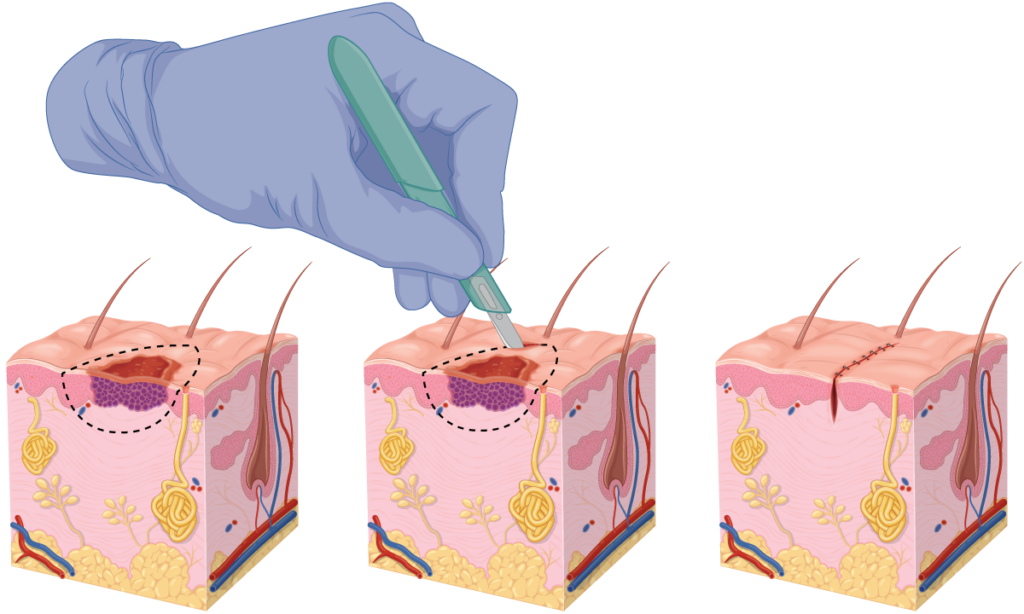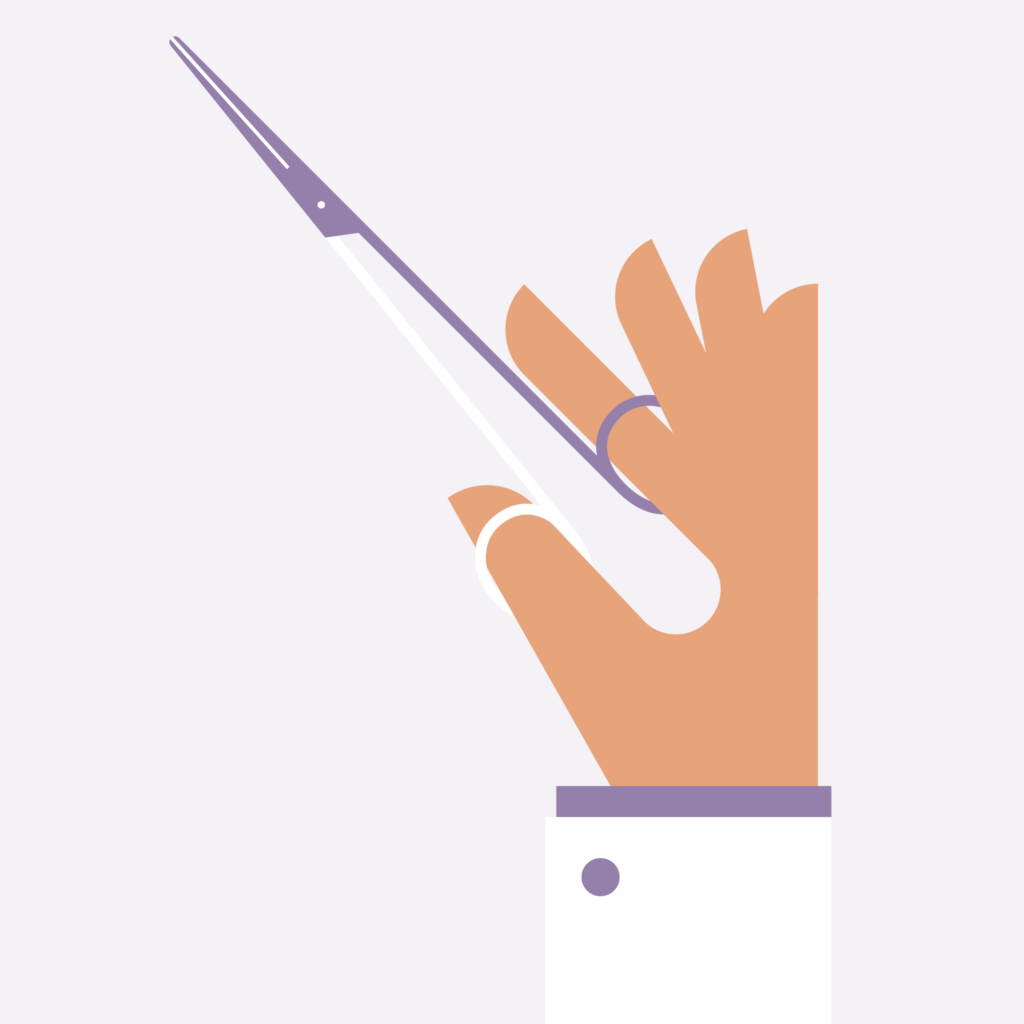This page discusses procedures to remove different types of benign lesions from the skin. The types of lesions that can be removed include moles, cysts, lipomas and many other ‘lumps & bumps’.
For skin cancers, please see skin cancer removal as the approach for removal is very different.
Your goal
The most important part of the process is for us to understand your reasons for removal and what you want to achieve. We are highly skilled at numerous different types of procedures, however, we need to know what you want before we can select the correct options. Of course, we will discuss the various options available and the pros and cons of each.
Mole removal and other lesion removal are commonly undertaken for a number of reasons which can include:
- The lesion is causing discomfort.
- The lesion is annoying, keeps catching onto things or repeatedly bleeds.
- The lesion is unsightly and you want it removed for cosmetic reasons.
It is normally undertaken with a local anaesthetic field block (numbing injections around the affected area) to minimise pain from the procedure. This means that you will be awake during the minor surgery.
The doctor will plan the procedure to ensure the best possible outcome for each individual person and will take personal preferences and concerns into consideration.
Planning is always a balance of ensuring adequate mole removal and lesion removal against functional and cosmetic outcomes. Sometimes the doctor will undertake techniques that can seem counterintuitive but are done to achieve better cosmetic outcomes.
We want to make sure that you are happy and understand what to expect, please ask questions if you are unsure.
Procedure options for mole removal and lesion removal
There are several techniques that we can use to remove benign lesions:
- Cryotherapy
- Curettage
- Punch excision
- Shave excision
- Electrofulgration or diathermy (zapping/burning)
- Surgical excision

Surgical excision to perform a mole removal and lesion removal
An excision is performed with local anaesthetic to remove the lesion which is normally sent to the laboratory for analysis. The wound is normally stitched together and requires you to rest to optimise the healing process.
Several different types of lesions can be removed including cysts, lipomas, vascular lesions, as well as many others.
For the removal of benign lesions, we will keep the safety margin as narrow as possible to minimise the size of the surgical wound. Normally the wound is elongated and pulled together to create a flat, straight wound (direct closure). In some situations, we may need to undertake different closure methods to optimise the cosmetic result. These can include:
- Flaps recruit adjacent skin into the wound while minimising the distortion of adjacent structures. Sometimes we use flaps to allow us to hide as much of the scar line as possible such as within the hairline or in natural creases. This may result in scar lines that are curved or angular shapes.
For the removal of benign lesions, we would normally only need to use a direct closure or flaps to close the wound. We can use skin grafts as well, however, they are more commonly used for skin cancer surgery. Here are a couple of the different types of skin grafts:
- Split-thickness skin grafts involve taking a superficial layer of skin from a distant site and stitching this into the wound. These types of grafts will normally heal with a depressed scar.
- Full-thickness skin grafts involve taking a full-thickness piece of skin from a distant site and stitching this into the wound. Full-thickness grafts can often heal with good cosmetic results if a good tissue texture match can be obtained from the donor site.

The procedure
- The surgery will be planned out taking care to ensure your goals are achieved as well as an optimal cosmetic outcome. This will involve drawing on the skin with a felt pen. You are more than welcome to inspect the plan and ask questions.
- Local anaesthetic will be infiltrated into the surgical site.
- The excision will be carried out which may involve undermining to free up the tissues and strengthen the wound.
- Electrocoagulation (or diathermy) may be used to stop bleeding. This helps to minimise the risk of complications and improve the cosmetic result.
- The wound will be stitched, normally using two layers of sutures. The deep layer uses a dissolving suture that provides structural support to the wound to reduce the risk of the wound stretching (dehiscing). The superficial layer can use either a dissolving or non-dissolving suture and helps provide a good cosmetic outcome.
- The wound will be cleaned and a dressing applied.
- The specimen will be sent to the laboratory for histological analysis.
- You will be provided with a written information sheet that includes our after-hours contact number. While we don’t expect problems, we want to ensure that we are there for you should the unexpected arise.

Post-procedure
After the procedure has been completed, we will not abandon you.
We will discuss how the surgery went and you will even be given an opportunity to inspect our work – we take pride in our work and have nothing to hide. Although, we appreciate that some people would rather not look immediately after surgery. We also provide you with aftercare information and dressings.
While we provide a good cosmetic outcome at the end of surgery, wound healing is a team effort. It is important for you to rest after the procedure to ensure that tension on the wound is minimised. This will allow the wound to heal with a good result. We encourage you to plan your procedure so that you can take things easy for about one week following surgery.
It will normally take 1-3 weeks for the laboratory to issue the histology report. We routinely ensure that your GP is notified of these results, however, please advise us if you prefer we don’t send the results to your GP.
Why should I have my mole removal or lesion removal at Skintel?
We take pride in good outcomes for patients and ensure that we provide the best cosmetic outcome possible. This is why the majority of our patients return time and again for further care.
References
- Bangash, HK. Ibrahimi, OA. Lawrence, JG. et. al. Who Do You Prefer? A Study of Public Preferences for Health Care Provider Type in Performing Cutaneous Surgery and Cosmetic Procedures in the United States. Dermatol Surg. 2014;40(6):671-8. doi: 10.1111/dsu.0000000000000016

